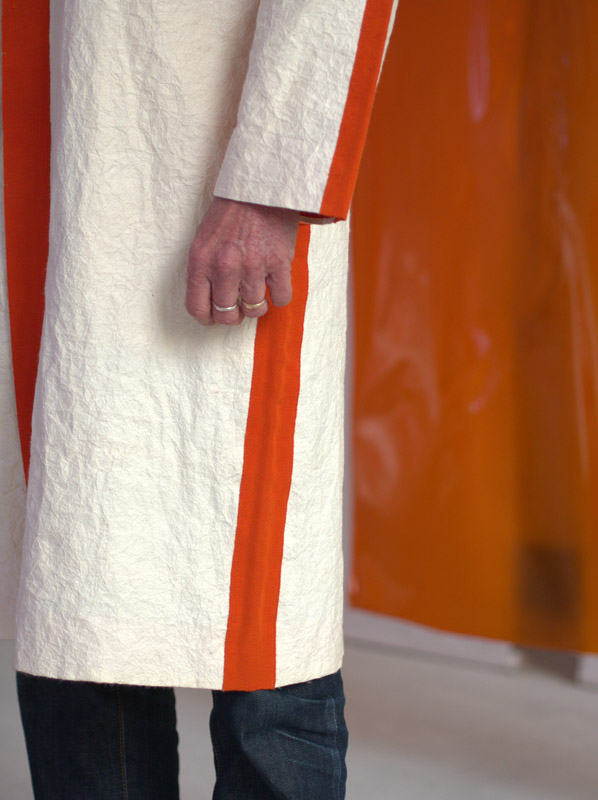DNJ PAPER is a speculative design project that produces prototypes to explore specific aims, which can include experimental materiality or conceptual exploration.
By connecting historical data with trial and error, the designers have developed numerous prototype designs that have exceeded expectations—coats, hats, jackets, wallets, and bags, and have shown some in symposia and exhibitions internationally.
DNJ PAPER’s design process begins with fieldwork undertaken in Japan with paper- and paper clothing-makers. On behalf of the British Museum, Daphne has conducted interviews with traditional papermakers, documenting the relationships and processes involved in making the source material. All of our paper can be traced to the original source, including details as specific as the paper type, the maker’s family history, the type of water used, and the origin of the plant fibre used in each sheet.
DNJ PAPER embodies paper’s ability to be manipulated and adapt, and has applied the textile to a variety of design briefs and projects, including the Theseus Coat, for the “Future Prototyping” exhibition held in partnership with Melbourne Design Week in 2020, and Kamiko Bomber, for iD Dunedin Fashion Week, in collaboration with Otago Polytechnic.
DNJ PAPER draws on common garment archetypes, such as the Mac Coat and the Bomber Jacket, and develops zero-waste prototypes until a satisfactory design has been achieved. The paper that is used is handmade, and as a result comes in slightly differing sizes. To adapt to this, designs need to be redrawn and drafted to meet the size of the sheet in order to reduce or eliminate waste. Further designs are also developed to be able to use the waste, such as collage, applique, recycling, and gluing.






